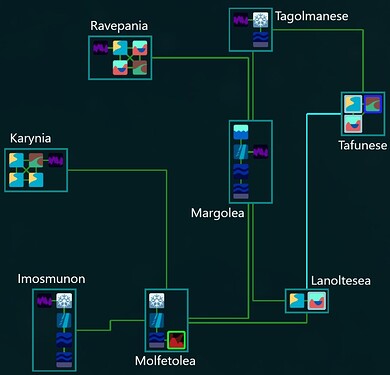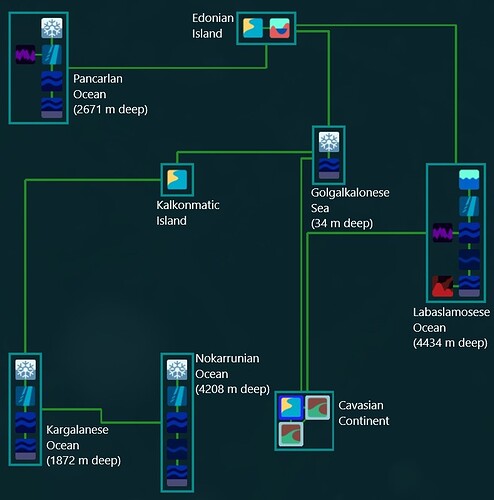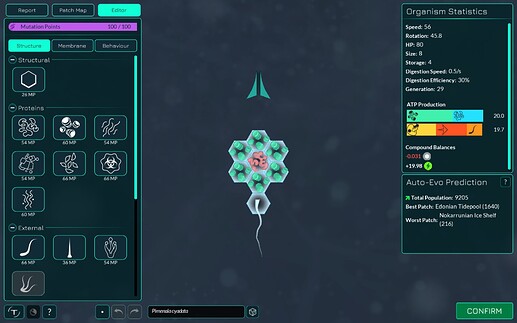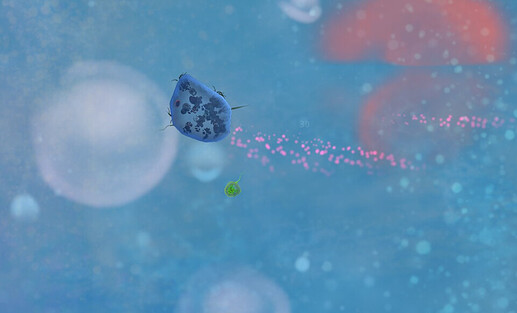With the patch map generation feature included in the last release, I think that it would be a fun and constructive exercise to share some of the worlds that we encounter in our playthroughs. I propose to display the planet seed number (so that anyone may actually play on it for themselves), the names of their regions (continents/oceans) and to try to infer and imagine how the actual, associated planets could actually be. Additionally, we could also share some of the species that have evolved on it. I will start with the following world:
Planet seed: 2049037443
Version: 0.5.9
Life has not yet appeared in 2049037443, a relatively cold planet with an intricate system of underwater caves that could one day host and be explored by chemosynthesizing organisms.
The surface of the Molfetolean ocean is regularly covered by a thin layer of ice. However, in the depths, magma from the its mantle finds a way to the cold ocean through a local fissure in the rocky crust. There, water is heated and violently shaked, nutrients are mixed with the ocean and chemical reactions are accelerated. Those conditions may soon give way to the first, simple life forms, … unless comets and asteroids left from the formation of its stellar system provide an alternative. The absence of further underwater regions with volcanic activity suggests a relatively reduced amount of internal heat, and imply that plate tectonics may be limited or unexistent.
The largest emerged landmasses are the continents of Karynia, Ravepania and Tafunese. The existence of estuaries on their shores suggests an active water cycle, and a significant elevation of the terrain in the interior. The deepest point corresponds to the sea floor of the Margolean ocean, about 3000 m below the sea level.



